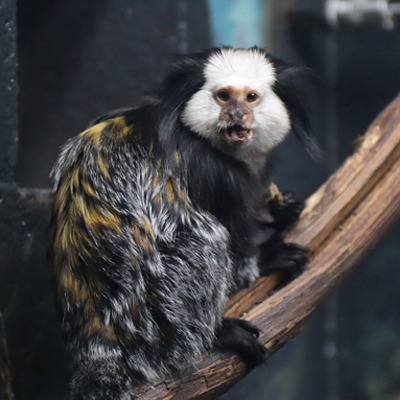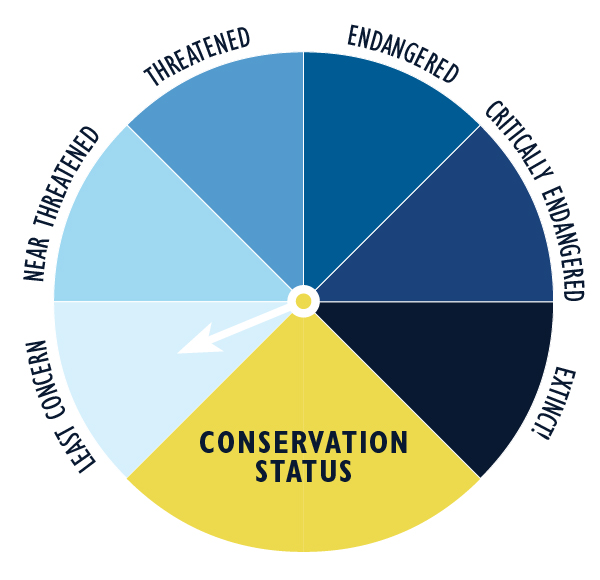
About Geoffroy’s Marmoset
You’ll know a Geoffroy’s marmoset when you see one! These distinct monkeys are not only known for their white cheeks, forehead, and throat, but also for their dark ear tufts. Many of their features, such as their claws, are highly unusual among primates.
Habitat
Geoffrey’s marmosets are found in the lowland rainforests of Brazil.
Diet
Their omnivorous diet (eating both plants and animals) includes fruits, flowers, nectar, lizards, frogs, and spiders. They also consume a variety of tree saps and gums, a type of tree sugar.
Family Life
Marmosets are very social creatures and commonly live in groups of eight to ten, led by a dominant female. They are one of the only species of monkeys/apes that frequently give birth to twins. After the offspring are born, many members of the pack, including males, help raise them.
Conservation Status
The conservation status of the Geoffroy’s Marmoset is classified as least concern.
Threats
- The main threat to the Geoffroy’s marmoset is habitat loss. The destruction of their forest habitat causes their population to be fragmented and separated from other mating partners.
- Like other small primates similar to this species, the Geoffroy’s marmoset is sold in the illegal pet trade.
Facts about Geoffroy’s Marmoset
Class:
Mammalia (mammals)Order:
PrimatesFamily:
Callitrichidae (New World monkeys)Genus:
Callithrix (New World monkeys)Species:
Callithrix geoffroyi (Geoffroy’s marmoset)Life Span:
10 yearsSize:
7.8 inches (19.8 cm)Weight:
8 – 19 ounces (0.2 – 0.5 kg)Tail Length:
11.4 inches (28.9 cm)
Fun Facts
- After offspring are born, the father carries them non-stop for two weeks.
- They have special incisors, or narrow-edged teeth at the front of the mouth, that help them carve small holes in trees to access sap and gum.